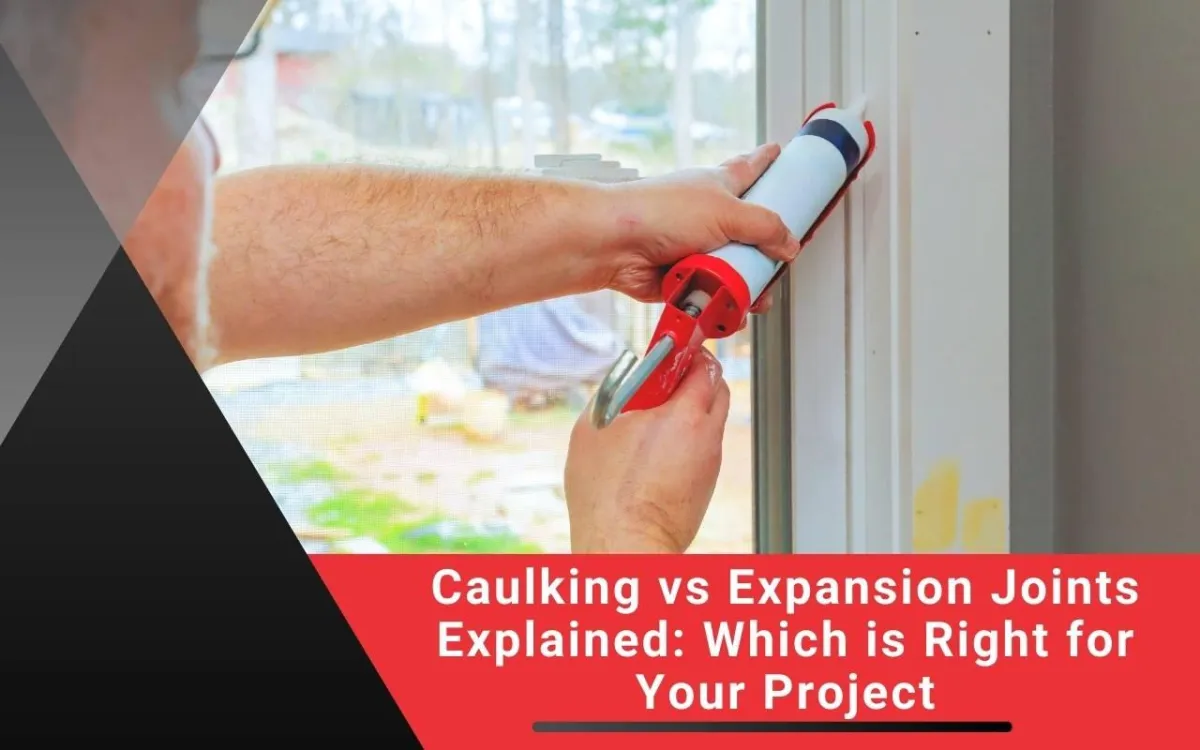BLOG

Caulking vs Expansion Joints Explained: Which is Right for Your Project
When it comes to construction and renovation, the stakes are high. Every decision impacts structural integrity and project success. Choosing between caulking and expansion joints may not seem glamorous, yet it is crucial. Whether you're an experienced contractor or a DIYer, knowing the difference prevents costly repairs. Selecting the correct method ensures long-lasting and safe structures. Imagine a beautiful patio crumbling due to joints failing under seasonal shifts. This article explores Caulking vs Expansion Joints Explained to guide your decisions. Moreover, whether focused on sealant tips or waterproofing, this resource helps your work last.
Understanding Caulking in Construction
Caulking seals gaps, joints, and seams, keeping air, water, and pests outside. Materials range from acrylic latex to advanced sealants. Unlike rigid fillers, caulk remains flexible after curing. This flexibility accommodates substrate movement under temperature changes. Typically applied with a caulking gun, it forms a continuous protective bead. Contractors prefer caulking for its simplicity and affordability. Additionally, applications include sealing windows, doors, drywall, roofing penetrations, and even floor joints. Knowing each type’s limitations supports proper use.
The Role of Caulking in Sealing Gaps
Caulking creates barriers against air, water, and contaminants. By closing gaps, it improves energy efficiency and reduces drafts. Therefore, waterproofing success depends on cleaning, priming, and precise application. Helpful joint sealant tips include cutting the nozzle correctly and smoothing the bead. Moreover, caulking also prevents mold and pest intrusion by keeping moisture out. However, seals degrade from UV rays or extreme weather. Consequently, periodic inspection maintains caulking effectiveness over time.
Types of Caulk Materials and Applications
Acrylic latex: easy to apply and paintable, ideal for trim and drywall.
Silicone: waterproof and mold resistant, great for kitchens and bathrooms.
Polyurethane: strong adhesion for concrete, metal, and wood.
Polysulfide: chemical resistant, often used in industrial settings.
Structural sealants: durable solutions for heavy loads and curtain walls.
Choosing the right caulk means evaluating movement, exposure, and substrate type. Consequently, proper selection ensures durability and safety.
Benefits and Limitations of Caulking
Caulking is cost-effective, widely available, and flexible for light movements. It enhances energy efficiency and protects interiors from water damage. Yet, it cannot handle large structural movements. Lifespans vary from five to twenty years, requiring maintenance. Therefore, for heavy loads or extreme shifts, expansion joints often perform better.
Exploring Expansion Joints in Construction
Expansion joints are built-in gaps absorbing movement from temperature changes, seismic activity, or settlement. Unlike caulking, they preserve separation between elements. They appear in bridges, sidewalks, slabs, and highways. Materials include backer rods, elastomeric strips, and protective cover plates. Although requiring more planning and effort, expansion joints manage large movements effectively.
Importance of Expansion Joints in Controlling Movement
Thermal and seismic movements create stress in materials. Expansion joints relieve stress by allowing movement without damage. They also support waterproofing by integrating gaskets or sealants. Moreover, correct placement prevents cracks and preserves surfaces. Well-spaced joints minimize unsightly cuts and prolong service life.
Different Types of Expansion Joints
Slab-to-slab joints: prevent random cracking in pavements or floors.
Wall joints: allow vertical and horizontal structural movement.
Seismic joints: designed for major displacements during earthquakes.
Roof and facade joints: combine waterproofing with flexibility.
Fillers: foam, strips, or bellows suited to specific needs.
Selection depends on movement magnitude, environment, and aesthetics. Therefore, proper detailing ensures expansion joints perform consistently.
Advantages and Disadvantages of Expansion Joints
Expansion joints accommodate large shifts, protect structures, and ensure controlled movement. They are indispensable in large or exposed projects. However, they often cost more and require skilled installation. Additionally, filler degradation demands periodic replacement. Consequently, design integration is vital to maintain aesthetics.
Factors to Consider When Choosing Between Caulking and Expansion Joints
Movement expectations: light shifts may suit caulking, large ones need expansion joints.
Environmental conditions: exposure affects longevity and material choice.
Performance needs: structural or decorative roles influence the decision.
Budget: costs differ between approaches.
Hybrid use: combine caulking and joints for best results.
Always check codes and manufacturer guidelines for reliable outcomes. For related guidance, explore our types of concrete expansion joints article or our installation guide.
FAQs About Caulking vs Expansion Joints Explained
1. What is the main difference between caulking and expansion joints?
Caulking seals small gaps, while expansion joints manage large structural movements.
2. Can I use caulking instead of an expansion joint?
No. Caulking handles minor shifts only. Expansion joints are required for heavy or repetitive movement.
3. How often should caulking be inspected?
Inspect caulked areas annually. Moreover, weather and UV rays degrade materials over time.
4. Do expansion joints also help with waterproofing?
Yes. Expansion joints often include gaskets or sealants that stop water infiltration.
5. When is a hybrid approach recommended?
Using both is ideal when small gaps coexist with larger structural movements.
Making the Right Decision for Your Project
Ultimately, the right choice depends on project needs. For minor gaps, caulking offers a practical solution. For larger movements, expansion joints ensure durability. By applying insights from this Caulking vs Expansion Joints Explained guide, you enhance performance and preserve integrity. Evaluate your conditions and apply best practices. For expert help, explore our caulking services in Lincoln or expansion joint solutions in Nebraska. Need tailored advice? Contact us today through our contact page.

Cracks, gaps, and surface wear weaken concrete, causing costly damage. You need a solution that lasts. That’s where we come in. Our expert team specializes in sealing and caulking, ensuring durable surfaces that withstand time and weather.




